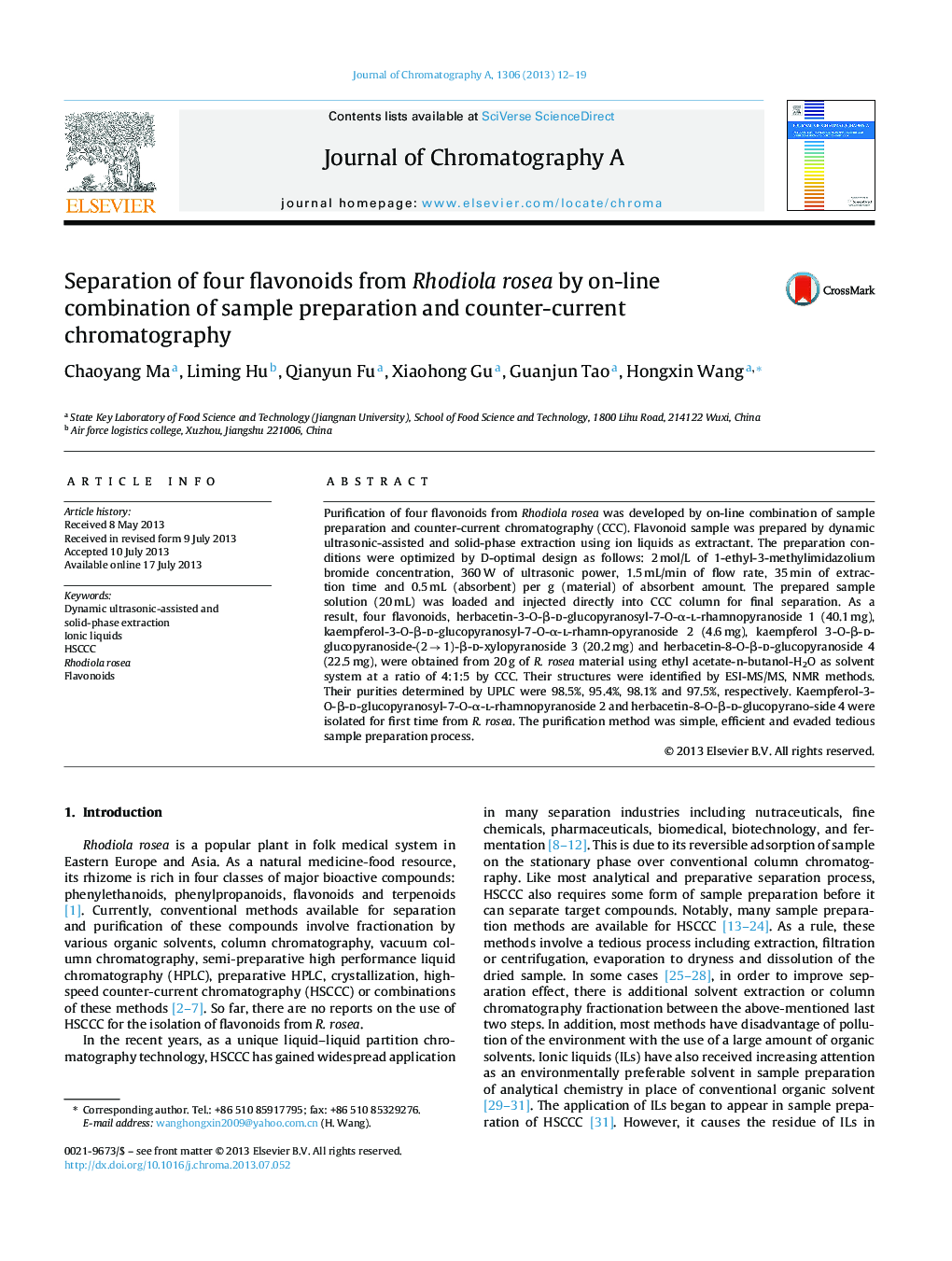| Article ID | Journal | Published Year | Pages | File Type |
|---|---|---|---|---|
| 1200451 | Journal of Chromatography A | 2013 | 8 Pages |
•A new method was developed to separate four flavonoids from Rhodiola rosea.•The merits of the method were low solvent consumption and no tedious sample pre-treatment.•The two of the four flavonoids were separated first time from Rhodiola rosea.
Purification of four flavonoids from Rhodiola rosea was developed by on-line combination of sample preparation and counter-current chromatography (CCC). Flavonoid sample was prepared by dynamic ultrasonic-assisted and solid-phase extraction using ion liquids as extractant. The preparation conditions were optimized by D-optimal design as follows: 2 mol/L of 1-ethyl-3-methylimidazolium bromide concentration, 360 W of ultrasonic power, 1.5 mL/min of flow rate, 35 min of extraction time and 0.5 mL (absorbent) per g (material) of absorbent amount. The prepared sample solution (20 mL) was loaded and injected directly into CCC column for final separation. As a result, four flavonoids, herbacetin-3-O-β-d-glucopyranosyl-7-O-α-l-rhamnopyranoside 1 (40.1 mg), kaempferol-3-O-β-d-glucopyranosyl-7-O-α-l-rhamn-opyranoside 2 (4.6 mg), kaempferol 3-O-β-d-glucopyranoside-(2 → 1)-β-d-xylopyranoside 3 (20.2 mg) and herbacetin-8-O-β-d-glucopyranoside 4 (22.5 mg), were obtained from 20 g of R. rosea material using ethyl acetate-n-butanol-H2O as solvent system at a ratio of 4:1:5 by CCC. Their structures were identified by ESI-MS/MS, NMR methods. Their purities determined by UPLC were 98.5%, 95.4%, 98.1% and 97.5%, respectively. Kaempferol-3-O-β-d-glucopyranosyl-7-O-α-l-rhamnopyranoside 2 and herbacetin-8-O-β-d-glucopyrano-side 4 were isolated for first time from R. rosea. The purification method was simple, efficient and evaded tedious sample preparation process.
